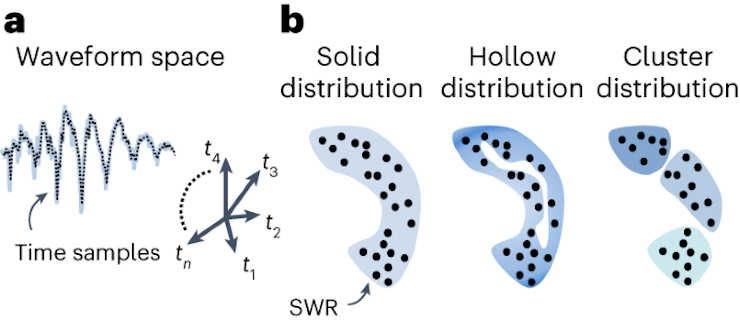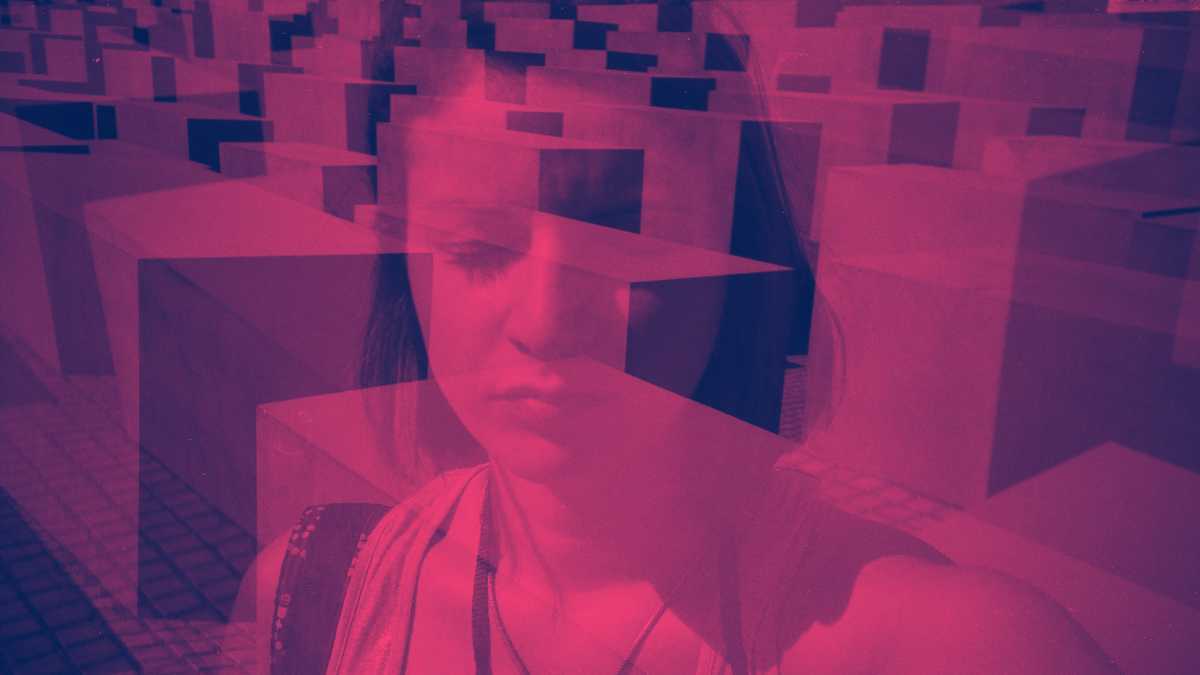The reactivation of patterns of neural activity based on experience is critical for learning and memory. Yet, these patterns and the associated brain waves vary greatly and are difficult to categorize. Such events, known as ripples, are typical of the hippocampus, a brain area responsible for remembering.
Up until now, frequency analysis has been the most widely used method for studying ripples. However, a project headed by the National Research Council (CSIC) of Spain has suggested a new classification scheme.
The finding could be useful for their differential classification in disorders such as Alzheimer’s disease and epilepsy, which concur with episodic memory deficits.
Using data science tools, a research group from the Instituto Cajal (IC-CSIC) headed by Liset M. de la Prida has managed to figure out the temporal structure of hippocampal ripples. The scientists observed that by projecting all of the events recorded during a session into abstract mathematical spaces, they obtained a cloud in which their position is far from random.
Ripples of Episodic Memory
Episodic memory is a representation of a person’s experiences, such as what happened at a specific time and place, and it forms the basis of their life story.
“This memory is formed and consolidated during ripples, which are short-lived high-frequency brain waves containing memory traces of the previous experiences. In disorders such as Alzheimer’s disease and epilepsy these ripples, and therefore memory, are affected,”
explained De la Prida.

a, Ripples are analyzed in the waveform space, which is defined from time samples in a given window. b, Each event becomes a point in the cloud made from all SWRs. The cloud could adopt different shapes from continuous (solid or hollow) to clustered. Topological data analysis of SWR events in the waveform space will help to disambiguate between the different distributions.
Credit: Nat Neurosci (2023). doi: 10.1038/s41593-023-01471-9
Memory traces of lived experiences occur as neural activity sequences. Entering a museum, travelling down a corridor, and ending up in a room staring at an artwork are all examples of sequences that are reactivated during these ripples and subsequently combine with other traces from past events, making links and modifying the most important portions of memory.
This means, for example, that entering the museum could be linked to the memory of a similar visit several years earlier. The waveform of the ripples reflects the specificity of the associated memory traces.
Event Cloud Shapes
Because of their oscillatory nature, ripples have long been studied using spectral tools to characterize the frequency and range of the oscillations.
“However, these methods are unable to identify the variability reflected by their waveforms and the associated neuronal sequences,”
said De la Prida. They used a data science strategy called topological data analysis in this project, which allows the temporal samples of the ripples to be projected in a high-dimensional space.
In this space, each ripple becomes a point, and when all of them are added, an event cloud is obtained. Researchers found that the shape of the cloud is interpretable in physiological terms.
Divergent Memory Content
Events with comparable frequency, length, or slopes are projected close together, whereas those with dissimilar characteristics are projected far apart, according to Enrique Rodrguez Sebastián, predoctoral researcher and lead author of the study. This allows researchers to decipher their mechanisms more precisely and predict ripples created by distinct regions of the hippocampus.
“These regions may trigger traces of different memory contents, such as those with more social content (who was at the museum) or more spatial content (the museum is next to my house),”
added De la Prida.
“Our work will facilitate understanding the mechanisms of the formation of episodic memory. These very same strategies could help to separate the physiological ripples from the pathological ones that accompany episodic memory deficits such as those experienced with Alzheimer’s and epilepsy,
the scientist concluded.
Abstract
The reactivation of experience-based neural activity patterns in the hippocampus is crucial for learning and memory. These reactivation patterns and their associated sharp-wave ripples (SWRs) are highly variable. However, this variability is missed by commonly used spectral methods. Here, we use topological and dimensionality reduction techniques to analyze the waveform of ripples recorded at the pyramidal layer of CA1. We show that SWR waveforms distribute along a continuum in a low-dimensional space, which conveys information about the underlying layer-specific synaptic inputs. A decoder trained in this space successfully links individual ripples with their expected sinks and sources, demonstrating how physiological mechanisms shape SWR variability. Furthermore, we found that SWR waveforms segregated differently during wakefulness and sleep before and after a series of cognitive tasks, with striking effects of novelty and learning. Our results thus highlight how the topological analysis of ripple waveforms enables a deeper physiological understanding of SWRs.
Reference:
- Sebastian, E.R., Quintanilla, J.P., Sánchez-Aguilera, A. et al. Topological analysis of sharp-wave ripple waveforms reveals input mechanisms behind feature variations. Nat Neurosci (2023). doi: 10.1038/s41593-023-01471-9
Last Updated on January 2, 2024
